NOTE: With Hurricane Florence striking North Carolina and the Outer Banks, many people feared for the safety of the hundreds of wild horses that call North Carolina’s barrier islands home. The National Park Service announced that the wild horses that roam North Carolina’s Outer Banks weathered the worst of Hurricane Florence and emerged unharmed on the other side. “The horses have lived on this barrier island for 500 years, and they are well equipped to deal with rough weather,” the Corolla Wild Horse Fund (CWHF) that manages the herd wrote on their Facebook page ahead of the storm. “They know where to go to stay high and dry and are probably in better shape right now than most of us humans who are scrambling with final preparations. “
Below is a look back at a visit to the horses in 2013:
Photographer Lisa Cueman studies the equine form in it’s natural surroundings.
Riveted by a horse’s raw beauty, Lisa Cueman is drawn in close, abstracting her subjects in order to emphasize the grace, forms, textures, and lines that she finds so seductive and irresistible. In doing so, Lisa hopes to present the horse as if for the first time, and in a way that perhaps has not been considered.
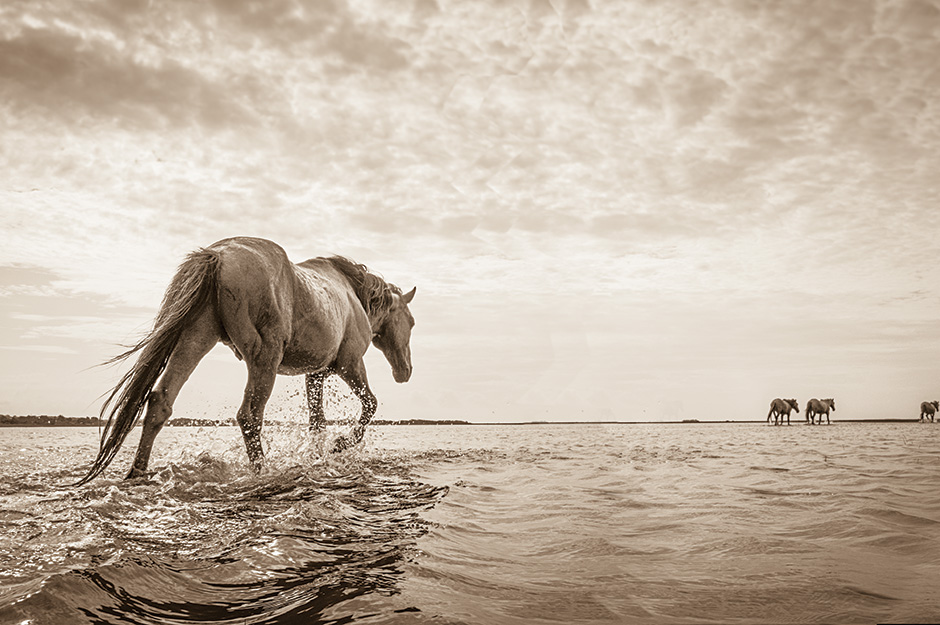
When did you first discover the unique herds of the Outer Banks?
I was introduced to the horses in the Outer Banks in the spring of 2012 at a workshop led by Jared Lloyd, an expert on the horses in the area. We began in the northern part of North Carolina, then relocated to the most southern part, and it was in this particular area that I felt truly inspired. It is said that a photograph is not just made with a camera. In the act of making a photograph, one brings to its creation all the pictures that one has seen, the books that one has read, and the people one has loved, not to mention the life that one has led. For me, it was landing in this particular area of North Carolina that initiated the coming together of everything I knew and loved.
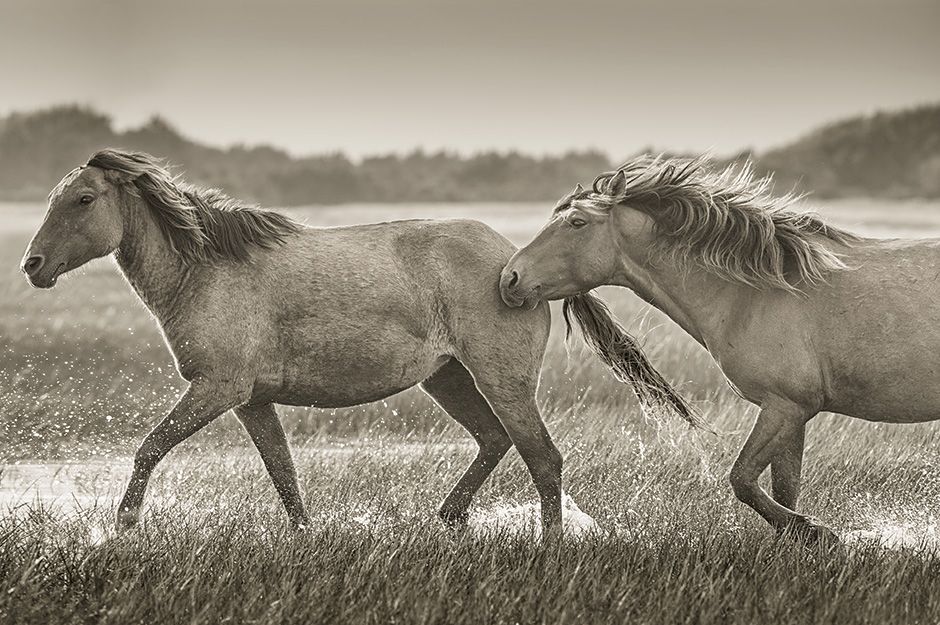
Why do you think the horses of the Outer Banks have resonated with you as a photographer?
I believe it is a confluence of my passion for horses, the thrill of travel, explorations in art, and island living. A camera is my tool that expresses what truly inspires me. The wild horses here are treasured icons of a proud seafaring heritage from the 1700s. They are mindfully protected, seen as valued creatures that are an integral part of not only a community but living links to the past that span some 400 years. They are recorded in the annals of the Spanish Mustang Registry and known to carry a genetic marker that is present in only two or three other surviving herds in America’s history.
Their survival for so long is a testament to their tenacity and the respect they are afforded by the community and their non-profit gatekeepers (Rachael Carson Reserve and The Shackleford Banks Foundation.) They serve as an example of a harmonious existence with mankind and the environment, making each visit to their world one that feeds and restores the soul.
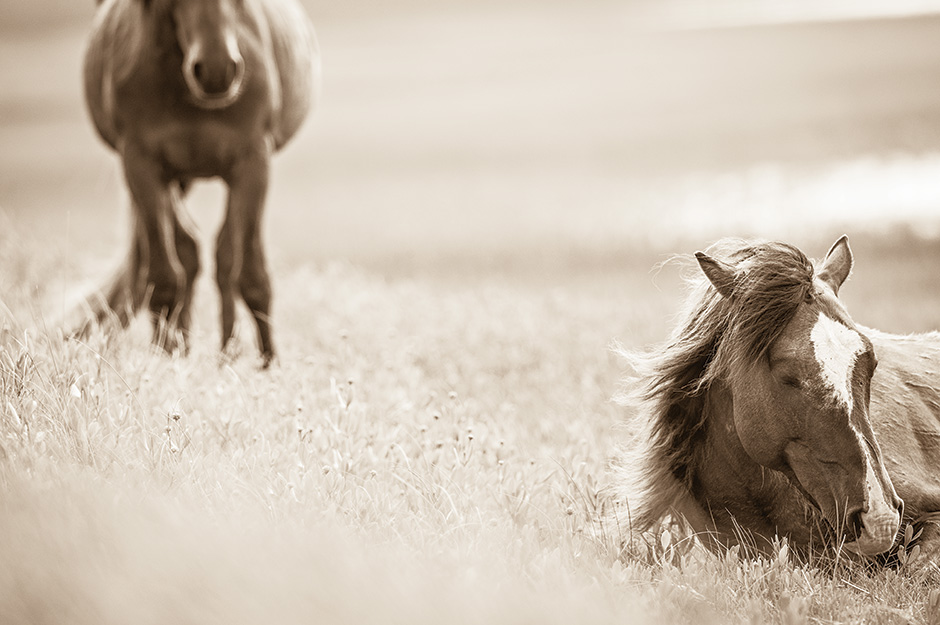
Can you describe your typical day of photographing these enigmatic horses in their environment?
It is a lot of hard work, but that is a relative term. I see it as an incredible luxury and privilege to do nothing else in a day but photograph. Hard work to me is sitting in my office. That’s the hard work. The days in the Outer Banks are long, exhausting, salty, dirty, wet, and hot! But I do love every single exhausting second.
I travel with a guide/fellow photographer Jared Lloyd, who introduced me to the area and whose, exhaustive knowledge of the environment and the horses, along with his navigational skills, have been invaluable to me. We are on the boat before sunrise, back on land around mid-day, and then back out on the water around 4 p.m., spending roughly 9 to 10 hours a day in pursuit of images, every day, usually for a span of 10 to 15 days. And there are no guarantees that you will find the horses, and if you do, they are not always in an ideal area to photograph. On my most recent trip in June of this year, there were many mornings out around the Shackleford Banks area where we did not see a horse.
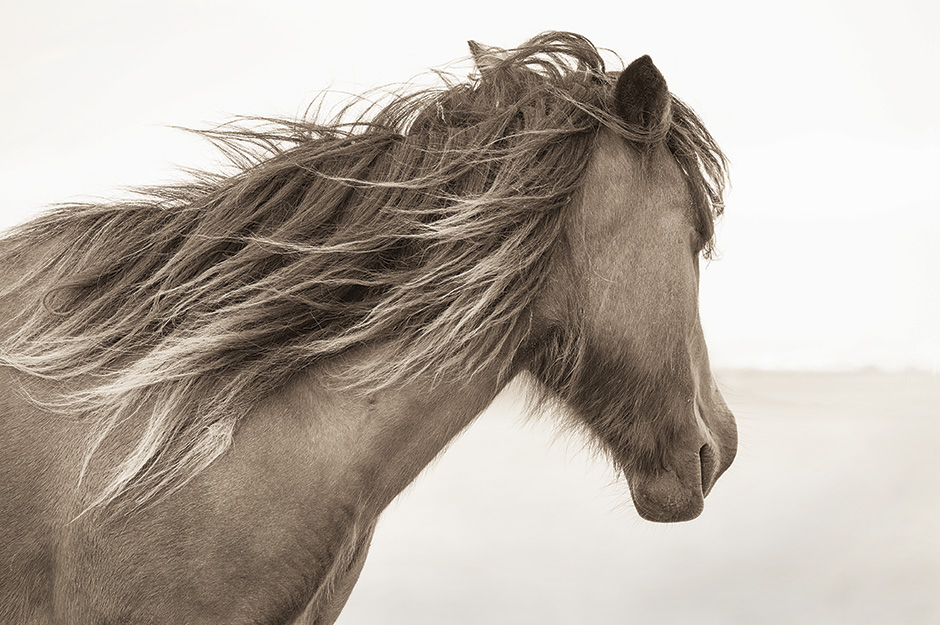
As a photographer, do you consider unpredictable island weather a challenge or an opportunity?
Tropical storms have come into play, reducing the number of shooting days by a day or two, sometimes even more. It’s all a part of it. It is the experience of photographing these wild horses in the Outer Banks. The unpredictability. Being there, with the herds, is entering into a time dictated by the rising of the sun, the ebb and flow of the tides, the direction of the winds, and the setting of the sun.
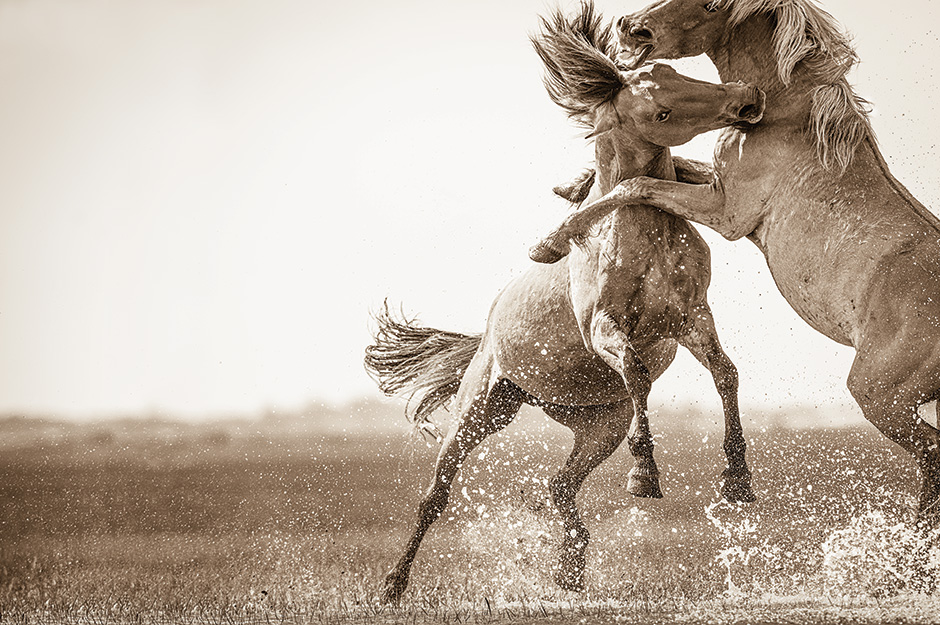
Do you have a particular approach or philosophy you use to capture the essence of your subjects?
Every visit yields incredible moments, which in turn allows for the making of an image. It is important to sometimes leave the camera alone and accept the limitations of being positioned badly, being too far away, or not having the right lens for a particular shot. Being an observer is as important as being a photographer. Observing is a delayed contribution to the next image. The more you know about your subject, the more you can predict the behavior that will lead to a successful creation of an image in waiting.
For contact information and upcoming exhibits visit www.lisacuemanphotography.com